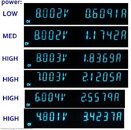OK, First impressions are important.
I ordered the light Saturday night and received an email confirming Sunday Night. On Monday morning I got a message confirming shipment and a tracking number.
The light arrived today, well packaged in a new box, complete with instructions and a little package of water proof grease.
The light itself has a high quality cable that is permanently attached to the battery canister and the light head. The battery canister seems to be made of PVC parts from the garden shop and epoxied into a permanent configuration, but that kind of makes sense at this price point. Handwritten on the battery tube are the words "GEN II". The closure at the bottom end has a rubber compression stopper, where the rubber expands laterally when a wing nut is turned, squeezing a washer on the outside with a washer on the inside. The rubber stopper is greased. The stopper will not get lost as it is soldered to a wire that runs from the battery spring on the stopper to the cable end of the battery canister.
On the outside of the battery cannister are a pair of stainless steel straps that hold a bit of webbing sufficient to keep the battery canister on your wings belt. Nothing fancy, quite practical, should work with the DIR philosophy.
The light head is also some kind of high impact plastic with a bezel that originally twisted on, but has been epoxied closed. The light head comes permanently attached to a high quality aluminum goodman handle. The handle is adjustable and has a small brass bolt snap attached with cave line. The goodman handle has a platform with lots of mounting options, but the light head is permanently epoxied to the handle. Kind of odd, but OK.
The light head has five LEDs set in a nicely reflector.
Inside the battery pack is a plastic tube that allows the battery holder to be used with 5 C cell batteries or as 4 D Cells.
The question that begs to be answered is "Can I use rechargeable batteries?" The light head is rated for use with a maximum of 8.4W. 5 C cells will give a peak of 7.5W, four Ds will give a max of 6W. I'm pretty sure the light head will stop producing light around 4W. So if I simply switch to NimH batteries in the same form factor, I can get to 6W in C sells or 4.8 in D cell sizes. I'll have to research other options.
The light head clearly says that I shouldn't power the light up with out immersing in water, so there may not be much in the way of heat sink capacity out side of water. Too bad the light head is epoxied closed, or I might just be able to figure something out there.
Over all, it seems like a robust, well designed piece of equipment, even if it has been sort of home manufactured. Ellis Fitler, the manufacturer seems to be very thoughtful. He was VERY prompt and professional about fulfilling my order and his web site says that he will repair any of his lights that fail. At small scale, this should be an easy promise to keep, because the item looks well built.
I'll power the thing up on a dive this weekend and let you know how it works.


